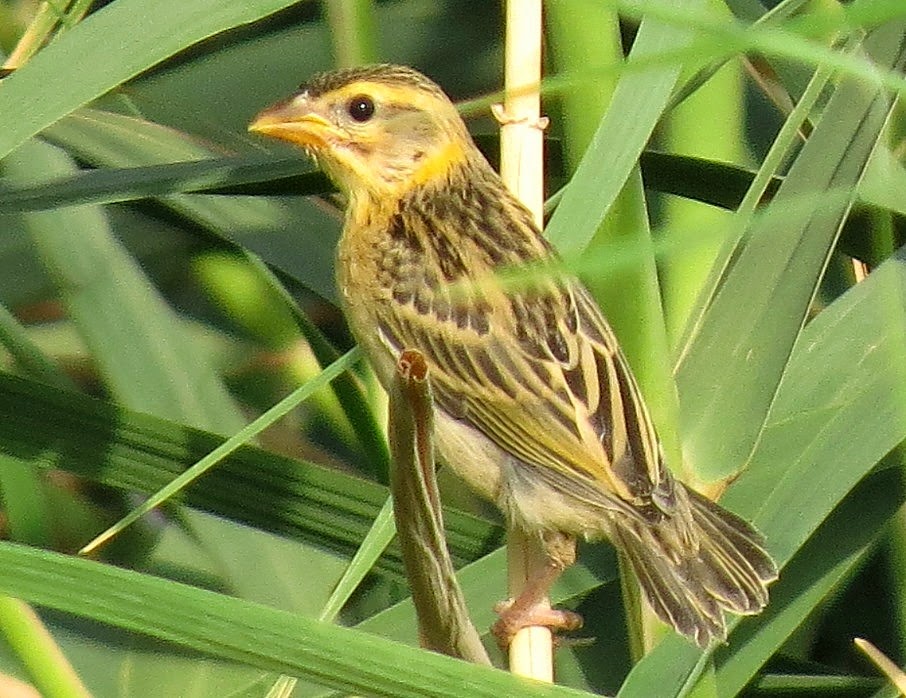Where the fresh water and reeds meet the flooded salt pan many of the birds were the same the area next to the golf course. This means a preponderance of terns, Kentish plover and black winged stilt.
greater sand plover
However there were several moorhen spilling out from the fresh water areas onto the beach in places. Two greater sand plover were also seen. There were over a dozen western reef heron around too.
little tern
In the fresh water reed beds and pools, only one tern was seen. This was little tern. However there were 60 resting in one place. They made up for lack of diversity with numbers.
Purple swamphen were present but mostly well hidden. A few Coot and little grebe ventured out into the larger lakes. A spotted crake flashed into the open and then back into the reeds. Despite our best endeavours we failed to see it again. The main regional guide says they breed in this part of the east coast.
In the reeds, there was noise suggesting the continued presence of Eurasian reed warbler but only one was seen.
yellow wagtail
Yellow wagtail was once reported to have breed opportunistically near Kharj in central Saudi Arabia and it wouldn't be a surprise to know it breeds at Sebkhet Al Fasl from time to time. Both Bernard and I saw the bird above. Bernard also saw an adult male feldegg yellow wagtail (also called black headed wagtail).
breeding little bittern
Very young little bittern were observed and this adult little bittern even has the red bill seen only during the peak mating period. There is little doubt that little bittern breeds here in Jubail.
non breeding curlew sandpiper
A lone curlew sandpiper was sighted in an inland saline pool. It's plumage was strange. It wasn't a juvenile yet there was no sign of breeding summer plumage. This is presumably what no- breeding second calendar birds look like in summer. I don't know why it never decided to go north.
curlew sandpiper
Soon after spotting the curlew sandpiper, a very good bird was seen. An Egyptian nightjar was flushed which then settled under a bush but with long grass between us and it. Bernard bracken managed a photo in focus which he has kindly allowed me to post.
Egyptian nightjar
After this, we made one last fleeting visit to the area south of the golf course. still looking for the elusive red wattled lapwing. The only different bird from earlier was a little stint in breeding plumage. Although there are thousands around in winter, they are uncommonly seen in summer plumage.
And as a final treat, as we drove away round the back of the wetland, we came across the over summering greater spotted eagle that others have reported this year.
little stint
As I am leaving Saudi Arabia for at least a year in the next two or three weeks, this was my last visit to Sebket Al Fasl for some time. It is certainly in the top five places for birding in the kingdom and will be missed.
Little
grebe
|
Red-necked
phalarope
|
Greater
flamingo
|
Gull
billed tern
|
Little
bittern
|
Common
tern
|
Squacco
heron
|
White
cheeked tern
|
Western
reef heron
|
Little
tern
|
Greater
spotted eagle
|
Feral
pigeon
|
Spotted
crake
|
Eurasian
collared dove
|
Moorhen
|
Namaqua
dove
|
Purple
swamphen
|
Egyptian
nightjar
|
Eurasian
coot
|
Black
crowned sparrow lark
|
Black
winged stilt
|
Crested
lark
|
Kentish
plover
|
Barn
swallow
|
Greater
sand plover
|
Graceful
prinia
|
Curlew
sandpiper
|
Eurasian
reed warbler
|
Little
stint
|
Common
myna
|
Dunlin
|
House
sparrow
|
Ruddy
turnstone
|
Yellow
wagtail
|




























































